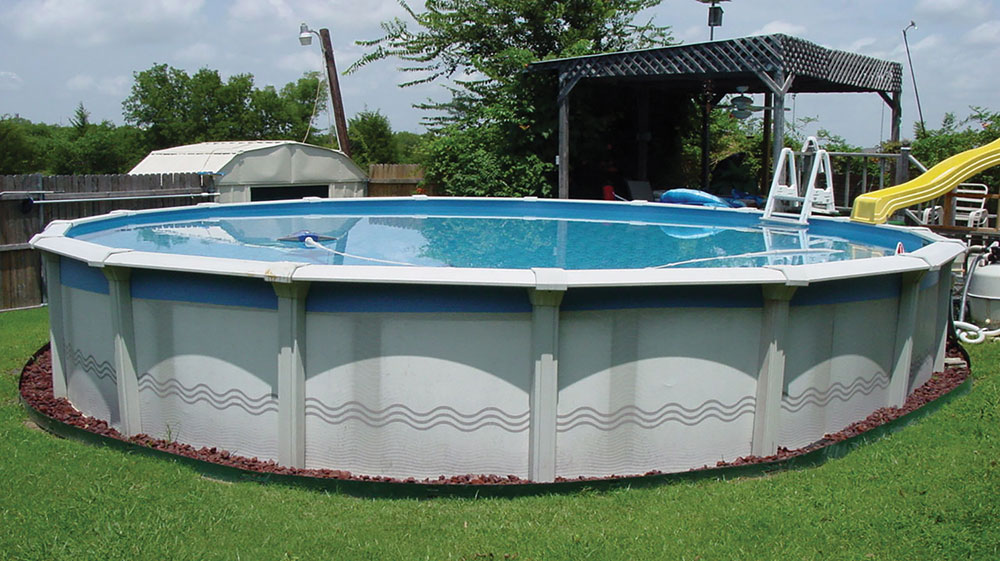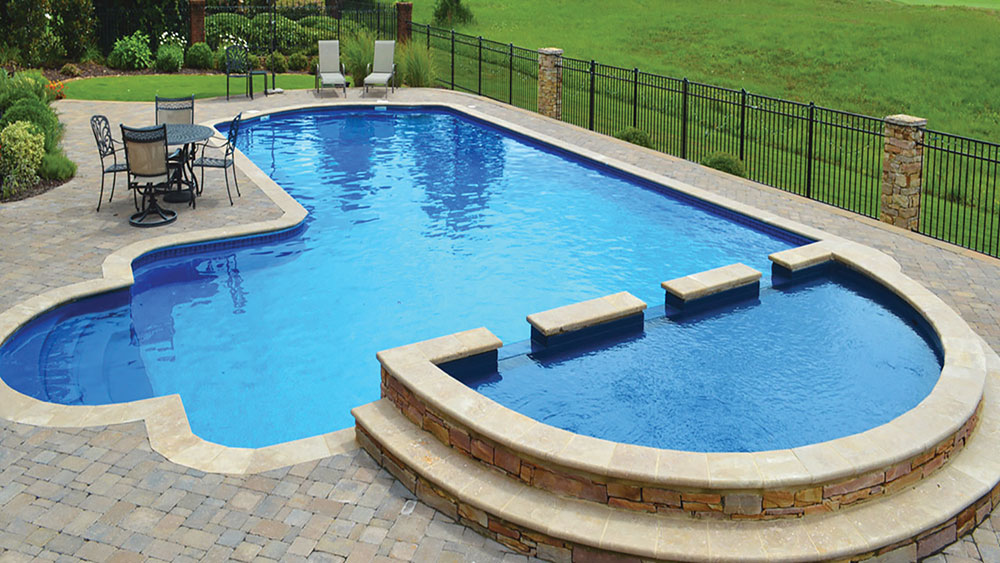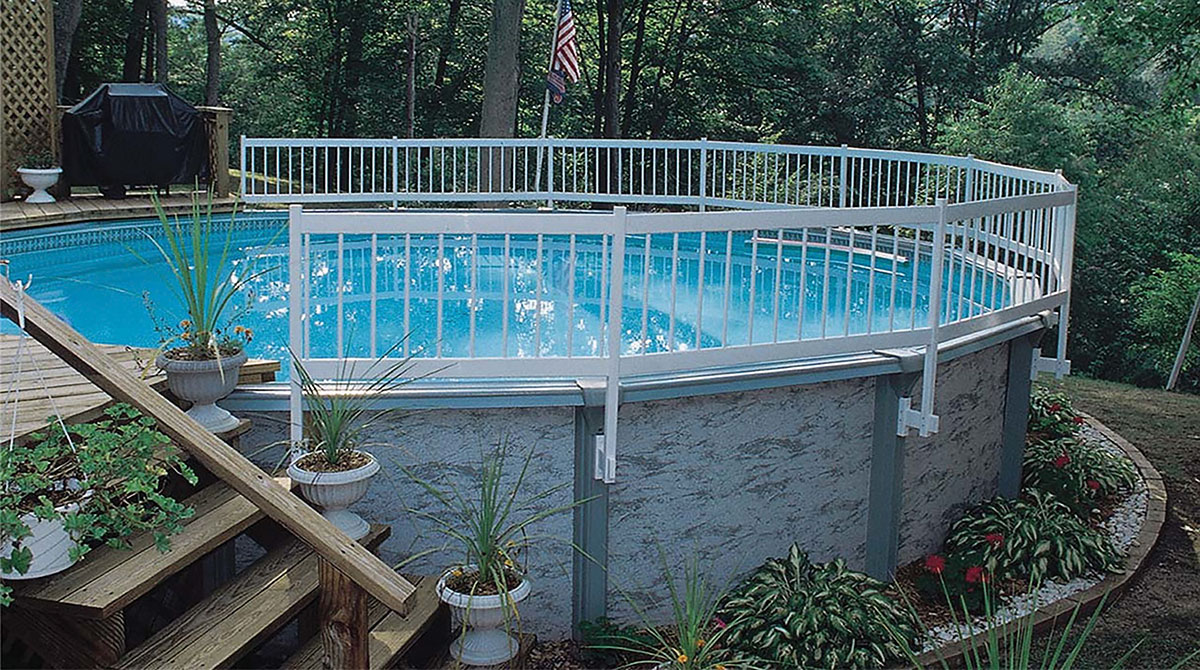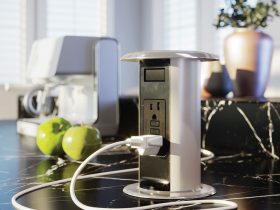Have you ever been defined as something that you are not? The results of a misdefined application, be it people or object, typically does not have a good outcome. The same can hold true for some of our electrical definitions. Let’s look at the circumstances surrounding a storable pool versus a permanently installed pool and how our definitions play a big part in these different applications.
Present Definitions
For years, what mainly distinguished a storable pool from a permanently installed pool was its water depth. In past Code cycles (and the current 2020 NEC), a Storable Pool was defined as a pool intended to be stored when not in use that was constructed on or above the ground and capable of holding water to only to a depth of 42 inches. A Permanently Installed Swimming Pool has historically been defined as a pool constructed in the ground or partially in the ground or any other pool capable of holding water at a depth greater than 42 inches.

What is so Magical About 42 Inches?
As clearly indicated in the previous and present definition, there seems to be something magical about this 42-inch depth of water when it comes to a storable or permanently installed pool. Perhaps we should look at the origin of this seemingly magical number.
Up to the 1975 edition of the NEC, the definition of a storable or permanently installed pool did not contain a prescriptive wall height or water depth. For the 1978 NEC, a proposed wall height of 3-feet was added to the definition of a storable pool. This change was submitted by the code-making panel (CMP-20) that had purview over NEC Article 680 (Swimming Pools, Fountains, and Similar Installations). In their Committee Statement for justifying this maximum wall height of 3 feet, CMP-20 indicated that the availability of increasingly larger sizes of above-ground pools made it necessary to clarify the intent of the definition by including maximum dimensions.
During the 1981 NEC revision cycle, a proposal was accepted to revise the definition of a storable pool by increasing the maximum 3 feet wall height limitation for a storable pool to a pool capable of holding water to a maximum depth of 42 inches. This proposal was submitted on behalf of the National Swimming Pool Institute seeking to change the definition of a storable pool to “a removable pool of any shape whose frame is located entirely above ground. These pools may be readily disassembled for storage and reassembled to their original integrity.” Notice that no depth demotion was proposed. In the substantiation for this proposed revised definition, the submitter stated that the current 1978 NEC definition of storable pool “inaccurately and inadequately describes the current products on the marketplace today.” The submitter went on to say that approximately 85 percent of the above-ground pools sold today (1981) are greater than 3 feet in depth (usually 42 inches to 48 inches) and come in a variety of shapes, and may have a maximum dimension of greater than 15 feet.
During this 1981 NEC revision cycle, the submitter intended to remove the prescriptive maximum wall height of 3 feet for a storable pool. However, the technical committee took an action to increase the maximum height of a storable pool from 3 feet to 42 inches. This was done without a whole lot of substantiation as to why the maximum height of 42 inches (and not 48 inches) was chosen by the technical committee. There is some indication that the 42-inch maximum water depth was tied to a storable pool wall height of 45 inches. This 42-inch maximum water depth has lived on in the definition of a storable pool from the 1981 NEC until the current 2020 edition of the NEC.

The Reality of Storable Pools
Storable pool manufacturers have been producing storable pools with wall heights of 48 inches for over 40 years without any negative impact on electrical safety. Today, it is very common to see storable pools that exceed the defined 42-inch water depth but qualify in every other way as a storable pool. From an electrical safety standpoint, these storable pools capable of holding water at a depth greater that 42 inches (not meeting the definition of a storable pool) are no different than a pool that has a maximum 42-inch water depth, meeting the definition of a storable pool. Providing requirements for electrical safety around a storable pool is not impacted if the maximum water depth is greater than 42 inches.
A “storable pool” is typically set up on level ground and comes in a complete package that can typically be set up in an hour or so without many tools with an instruction manual that clearly identifies it as a storable pool. If this “storable pool” is also capable of holding water at a depth greater that 42 inches (which many can), under present Code language and definitions of storable and permanently installed pools, this “storable pool” would have to comply with Part II of Article 680 for a permanently installed pool. For one thing, this would mean having to establish an equipotential bonding grid per NEC Section 680.26.
This situation can put the authority having jurisdiction (AHJ) in a very difficult position when a storable pool with a maximum water depth greater than 42 inches is installed. The AHJ clearly understands that this is a storable pool that is easily determined. However, the AHJ also understands the current definitions of a storable pool, and a permanently installed pool limits the maximum water depth to 42 inches for a storable pool. Once this defined “42-inch” limitation is broken, the AHJ knows that Part II of Article 680 must somehow be applied. The difficulty comes as the equipotential bonding grid cannot be bonded to this “storable pool” at four points [680.26(B)(2)], the pool water cannot be bonded to the equipotential bonding grid [680.26(C)], the pool pump for this “storable pool” is double insulated and cannot be bonded [680.26(B)(6) and Exception], and a solid 8 AWG copper equipotential bonding conductor cannot be connected to the equipment grounding conductor of the branch circuit supplying the pump motor [680.26(B)(6)(a)], just to name a few.
Anything New for the 2023 NEC in This Area?
For the 2023 edition of the NEC, the definitions for a storable pool and a permanently installed pool have been proposed to be revised to address the issues that have been discussed so far in this article. The definition of a “storable pool” has been proposed to indicate that a storable pool would be installed entirely on or above the ground and intended to be stored when not in use.
This 2023 NEC proposed definition goes on to indicate that a storable pool would be designed for ease of relocation, regardless of water depth. This newly proposed definition is uncannily similar to the originally proposed definition of a storable pool in the 1981 NEC revision cycle that the technical committee did not accept.
Also, for the 2023 NEC, a permanently installed pool would consist of pools that are constructed or installed in the ground, partially in the ground, or installed inside of a building. This 2023 NEC proposed definition goes on to state that these pools would qualify as permanently installed pools, whether they are served by electrical circuits of any nature or not.
Notice that both of these proposed definitions are void of any qualifying depth of the pool or water level. The technical committee (CMP-17) indicated in their Panel Statement that these definitions were being revised to affirm that any electrical hazards associated with a storable or permanently installed pool is not related to the depth of said pool. The submitter of the Public Inputs bringing about these revised definitions indicated that these changes were necessary to address multiple adverse impacts created with a prescriptive limitation of a 42-inch water depth. Newer designs in storable pools allow for depths greater than 42 inches, and an additional few inches of water has absolutely no impact on electrical safety. These revised definitions for the 2023 NEC will bring much-needed relief to both the installer and the inspector when it comes to applying the proper parts of Article 680 and Code rules to bodies of water, be they storable or permanently installed.
Conclusion
It seems that over the last decade or so, the manufacturers of storable pools have tried to implement a motto of the great state of Texas into their product, “Bigger is Better!” I personally don’t think these storable pool manufacturers were aware of the fact that when they made their storable pools “bigger,” they were implementing the more stringent rules of Part II of Article 680 on to their products in areas of the country where the NEC was being stringently enforced. Definitions are always important in any electrical installation. This can only be good that these two important definitions for storable and permanently installed pools are finally being addressed for the 2023 NEC. In my opinion, these revised definitions will make it much easier to comply or enforce safe and proper electrical rules to both of these different aquatic applications.















Find Us on Socials